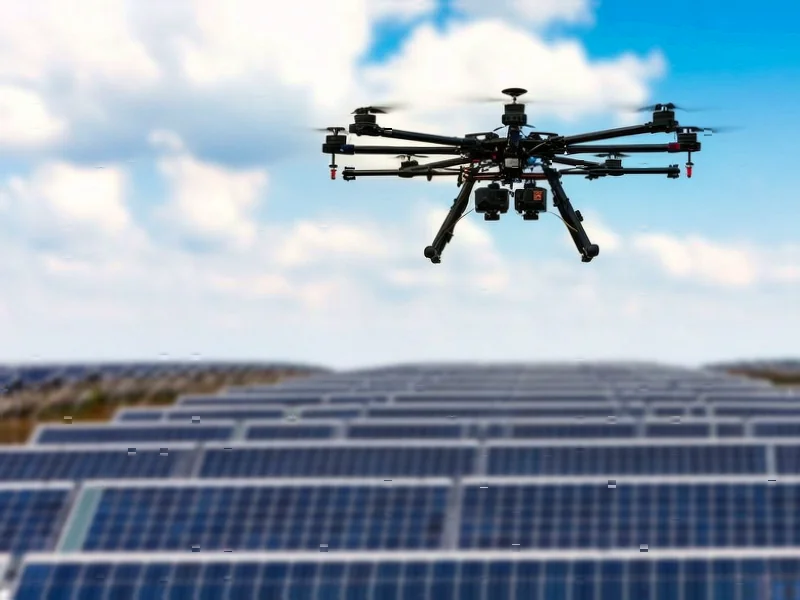According to Utility Dive, behavioral energy efficiency programs like Home Energy Reports are evolving beyond simple conservation to address critical peak demand challenges. Franklin Energy’s analysis using their NGAGE Discover analytics platform reveals that customers are measurably reducing energy use during high-stress hours without hardware or incentives, simply through better-timed information. The company’s Nexus engagement engine already delivers personalized insights to over 1.3 million customers, with results showing that behavioral programs can shift electricity usage patterns when designed with timing in mind. Through analysis of high-frequency interval data combined with econometrics and machine learning, the company found that behavioral approaches offer a cost-effective path to demand flexibility that’s ready to scale, though results vary by region, household makeup, and messaging style. This evolution represents a fundamental shift from measuring total kilowatt-hour savings to evaluating how customers use energy differently during critical periods.
When Behavioral Economics Meets Grid Operations
The transformation of behavioral energy programs from conservation tools to grid flexibility solutions represents a fascinating convergence of behavioral economics and power system engineering. Traditional demand response has typically relied on price signals or direct control of devices, but behavioral approaches operate in a different psychological space. The grid modernization efforts happening nationwide are increasingly recognizing that human behavior represents an untapped resource that doesn’t require massive infrastructure investment. What makes this approach particularly compelling is that it leverages natural human tendencies—social comparison, timely feedback, and practical guidance—to achieve grid benefits without the friction of traditional demand response programs.
The Silent Crisis in Peak Demand Management
Most consumers don’t realize that grid operators face what amounts to a daily crisis during peak hours. The difference between average demand and peak demand can require billions in infrastructure investment for capacity that sits idle 90% of the time. Traditional approaches to this problem have involved building more power plants or implementing complex time-of-use pricing schemes that often confuse customers. Behavioral programs offer a third way that addresses the root cause: human behavior patterns. The challenge has always been that peak demand typically occurs when people are home from work, cooking dinner, and running appliances—exactly when they’re least likely to respond to complex pricing signals. Behavioral interventions work precisely because they don’t ask people to fundamentally change their lives, just to make small timing adjustments.
Inclusion as Grid Resilience Strategy
The article’s emphasis on inclusive design isn’t just social policy—it’s becoming a critical component of grid reliability. Historically underserved communities often have different energy usage patterns due to factors like shift work, multi-generational households, or limited access to efficient appliances. When behavioral programs fail to account for these realities, they miss significant segments of the population and create equity gaps in who benefits from grid modernization. More importantly from a system operator’s perspective, they leave potential flexibility on the table. The move toward co-creation with local partners and multilingual reporting represents a recognition that effective demand flexibility requires understanding the diverse circumstances that shape energy use. This approach aligns with broader clean energy transition goals that emphasize equitable participation.
The Quiet Measurement Revolution
The shift from measuring total energy savings to evaluating timing and responsiveness represents a fundamental change in how we value grid resources. Traditional energy efficiency metrics treated all kilowatt-hours as equal, but grid operators know that a kilowatt-hour saved during peak demand is far more valuable than one saved overnight. This new measurement approach could eventually lead to behavioral programs participating directly in capacity markets, where their ability to reliably reduce peak demand would have tangible financial value. The challenge will be developing standardized, verifiable measurement and verification protocols that grid operators can trust. If successful, behavioral demand flexibility could become a tradeable commodity alongside traditional demand response and generation resources.
The Integration Challenge Ahead
While the potential is significant, integrating behavioral flexibility into grid operations presents unique challenges. Unlike traditional demand response that can be dispatched with certainty, behavioral programs work through probabilistic influence rather than direct control. Grid operators need predictable, dispatchable resources to maintain reliability, which means behavioral approaches will need to be combined with other technologies to become truly grid-facing resources. The mention of layering behavioral tools with smart thermostats and demand response platforms points toward hybrid approaches that combine human behavior with automated controls. This integration challenge extends to utility planning processes that have traditionally focused on hardware solutions rather than behavioral interventions.
Redefining Energy Market Participants
The evolution of behavioral programs could fundamentally reshape who participates in energy markets. Traditionally, demand-side resources have been limited to large commercial and industrial customers or homeowners with specific smart devices. Behavioral approaches democratize participation by enabling any household to contribute to grid flexibility, regardless of their income level or housing type. This creates new opportunities for aggregators to bundle behavioral impacts across thousands of households and offer them as grid services. The regulatory implications are significant—current market rules weren’t designed for resources that work through psychological influence rather than direct control. As these programs scale, we’ll likely see new market products and compensation mechanisms emerge specifically for behavioral flexibility.




